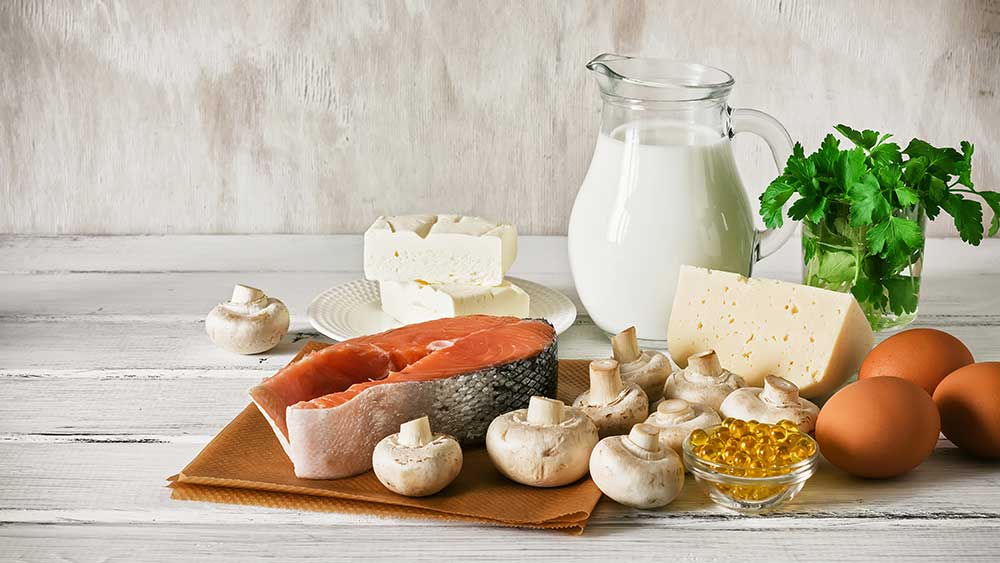Table of Contents
A Discussion on The Properties of Vitamin D and Why it is Essential in the Prevention of Disease and Viruses
Here comes the sun and it’s alright… (Beatles, 1969)
Most of us know of Vitamin D as “the Sunshine Vitamin.” Something we may not think about is that this substance is not only a vitamin, but a hormone as well, which is significant for numerous reasons which we will explore now.
Vitamins are made by plants or bacteria and act as catalysts for biochemical reactions. We are familiar with vitamins A, B, C, D, E etc. – all named as they were discovered between the late 19th and early 20th centuries. These vitamins – with the exception of vitamin D, and to some extent, vitamin K, that our body microbiome can produce – must be taken in by our diets and they participate directly in biochemical exchanges so that our bodies can operate normally. For example, vitamin C is a key ingredient in producing collagen and antibodies, and it helps slow virus replication.
Vitamin D as a Hormone
Hormones, in contrast, are substances that are formed in or by our organs. Thus, they are not essential in the diet. A hormone does, however, rely on a fundamental substance cholesterol as well as vitamins, minerals and other biochemicals for production. For Vitamin D, the light (photonic) energy from the sun is required.
When needed, hormones are released directly into the blood stream by a feedback mechanism. They signal cells via receptors (receiving molecules) to turn on or turn off a process. For example, the hormone insulin is made in the pancreas and released as needed to help sugar enter cells when it is taken by the diet to provide energy for bodily function; when cells are sufficiently nourished, insulin levels will come down. Note: exogenous hormones (outside sources like injection, cream or oral forms) may be needed if the body is deficient or unable to produce its own (endogenous) hormones. Vitamin D falls into that realm, especially if someone is severely deficient and it can be prescribed by a physician to prevent bone and immune system breakdown.
I get by with a little help from my friends… (Beatles, 1967)
How the Body Produces Vitamin D: With a Little Help from the Sun
If you are looking for the best source of vitamin D production, take a peek in the mirror. You are the most important source, but you need the sun to make it happen.
So, how exactly does the body help itself produce this vitamin/hormone D? Your skin is the receptor of the light rays of the sun, where there is a fantastic transformation of UV-B radiation energy via a biochemical reaction in the lower two layers of the skin. The UV-B light of the sun photolyzes (light causes a separation of molecules) a pro-vitamin D (7-dehydrocholesterol) into a pre-vitamin D that moves via the blood circulation to the liver where it becomes vitamin D (25-hydroxycalciferol) and this then moves into the kidney where there is a completion of the production of the most absorbable form that we know as vitamin D3, calcitriol or 1, 25-dihydroxyvitamin D3. It is in this form that the D3 is utilized as it is needed for signal bone strengthening, mood stabilization, memory enhancement, immune cell production and fortification (protection against autoimmune diseases), glucose metabolism, and heart stability (new research from Australia is looking at how low D levels will contribute to serious scarring in heart attacks). This whole process is a superb example of how the energies that we are exposed to can influence and change our bodies in positive or negative ways.

The human body formation of the vitamin/hormone D does, however, depend on certain factors. Where you live, the time of day, the season of the year, your age and the color of your skin are all influential in the ability of the body to produce. Higher latitudes and polluted or high smog areas will have less sunlight availability so supplemental D will be necessary; sun exposure without sunscreen between the hours of 10am and 2pm is best for vitamin D production; fall and winter will have less sunshine and seniors will likely need a supplement due to less capacity for D production due to skin thinning, less varied diet and possibly more time spent indoors.
If you have more melanin (skin pigment) produced by the skin cells (naturally darker skin color), the step from the pro-vitamin to the pre-vitamin may take longer as melanin acts to defend the skin/body from the potential damaging effects of excess UV radiation. A person with darker skin, hence, will require more time in the sun than a person with light skin color to achieve an adequate vitamin/hormone D level. Usually, it will take approximately double the time for a darker-skinned individual to have vitamin D formed. For example, full sun exposure (total body or with swimsuit sans sunscreen) in a light-skinned person for 15 minutes will allow for approximately 15,000 IU while it would take at least 30 minutes in a darkly pigmented skinned person.
Daily Recommendations and Other Sources of Vitamin D
A daily recommended intake of vitamin D (best as D3, most absorbable form) is 400 IU for children up to 13 years of age, 600 IU for ages 14-70 and 800 IU for ages 71 and up. Keep in mind that these amounts are not fully protective as recent research shows a need of much higher intake to achieve protective blood levels that I describe below.
Of note, regarding any inadequacies of sunlight or lack of other light exposure given geographical region, there must be a dietary or supplemental form of vitamin D for the health and wellness of a person.
Food sources of vitamin D include fatty fish such as salmon, halibut, tuna, sardines, trout, cod liver oil, mushrooms, egg yolks, beef and fortified cereals, fortified animal and plant milk, and juices. Note that 4 ounces of salmon has approximately 400 IU of vitamin D and an egg yolk has about 35 IU. So, the contents of D can vary and are unpredictable.

Supplements that provide vitamin D3 may come from lanolin (sheep wool) or from lichen (fungus/algae combination). Daily supplementation of 2000-5000 IU may be needed. It is important to know your vitamin D level and this can be done through a medical provider or from a testing company that you can find on the internet. Inadequate levels are less than 30 ng/dl and levels for optimal body wellness and defense are in the range of 60-100 ng/dl. Research evidence on disorders ranging from chronic fatigue, autoimmune disease to cancer has been mounting on low blood D levels and a correlation with these conditions. Levels in the 70-100 range may be cancer protective and this is now under study.
Vitamin D in Prevention of Disease and Viruses
Vitamin D is a very special compound that is produced by the body with the help of the sun having properties of a hormone and serving as an important nutrient cofactor in many biochemical processes of our amazing bodies. In current times, vitamin D – in conjunction with other daily healthy choices – can help protect us against virtually any virus and other diseases.
Global research is actively demonstrating to be protective and preventive in the war against SARs-COV2. This compound is perhaps one of the most important and safest means by which we can help ourselves. Using the sun and/or by dietary and supplemental means along with a quality whole food plant-based food program, vitamin C (several grams or high dose by intravenous infusion, glutathione (500-1000 mg in liposomal or IV infusion form), exercise, proper sleep, social bonding and stress reduction, we can keep ourselves well.
For more information on this topic, contact our staff for an appointment with Dr. Maria at wellcomeomcenter.com or call us at (352) 600-4242.
References
- Bikle D, Vitamin D: production, metabolism, and mechanism of action. MDText.com. 2000-2017.
- Grant, W. B., Lahore, H. et al (2020). Evidence that vitamin D supplementation could reduce risk of influenza and COVID-19 infections and deaths. Nutrients, 12(4), 988,
- Holick, M. F. (2017). The vitamin D deficiency pandemic: approaches for diagnosis, treatment and prevention. Reviews in Endocrine and MetabolicDisorders, 18(2), 153-165.
- LLie, P.C., Stefanescu, S., & Smith, L. (2020). The role of vitamin D in the prevention of coronavirus disease 2019 infection and mortality. Aging Clinical and Experimental Research,1.





